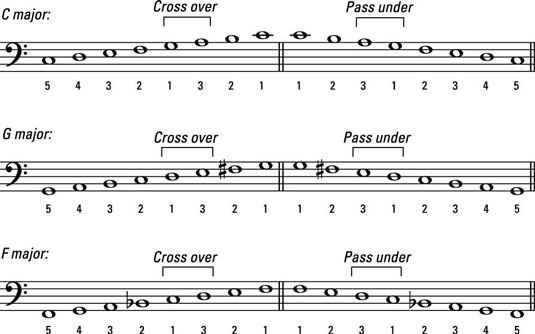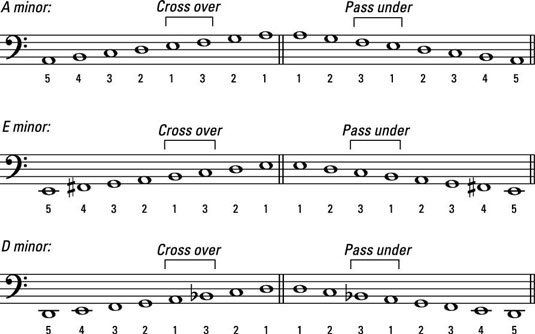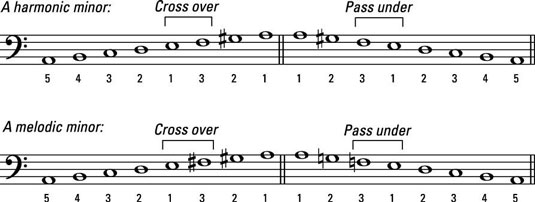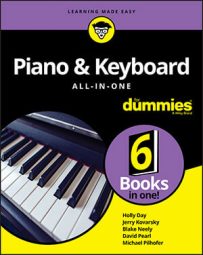Scales may not be the most exciting things to play, but they are great when learning to play the piano or keyboard. By playing left-hand scales you unwittingly master the following music essentials:
Reading the bass clef
Playing with the correct fingering
Using nifty patterns and harmonies
Realizing how much you miss playing with the right hand
Start with some major and minor scales by reading and playing the following scales left-handed. As with right-handed playing, remember to use the correct fingerings as indicated by the numbers above each note. How and when you cross your fingers is very important for obtaining a smooth sound and comfortable left-hand technique.
C, G, and F major
Here are three major scales for the left hand. You can use the same fingering, both up and down the scale, for all of these. Applying the major scale pattern, you play a scale with no sharps or flats (C major scale), one sharp (G major scale), and one flat (F major scale).

A, E, and D natural minor
You use the same fingering pattern in the three natural minor scales as you do in the three major scales.

A harmonic and melodic minor
These scales offer a good opportunity to practice your crossovers and pass-unders in the left hand. The scale patterns change at the same point you shift your hand position. Listen for smooth transitions and an even touch throughout each scale.


